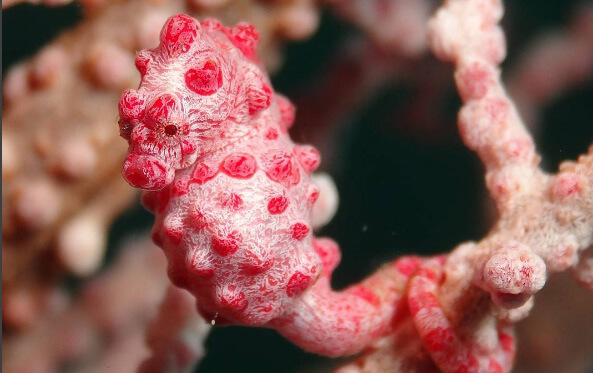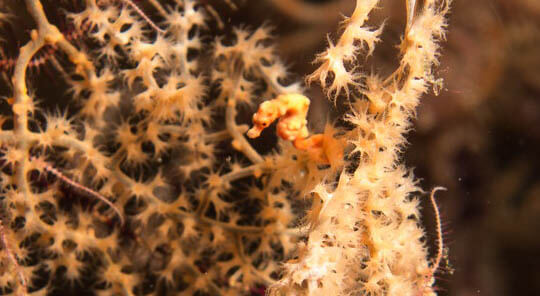Pygmy seahorse still remain one of the most fascinating creatures any diver will ever see. Pygmy seahorses form a group of seven species of miniature syngnathids which comprise of seahorses and pipefish. They all live in the Coral Triangle area in Southeast Asia. If you are an avid diver and you have been to Bali in Indonesia, you must have learned about the rich heritage this area boasts in relation to pygmy seahorses.

Photo credit : Marc Notte
Hippocampus Bargibanti 1st Pygmy Seahorse Discovery
The Hippocampus Bargibanti was the 1st species of pygmy seahorses to be discovered in the area. These species are unique in their features which include a tubular mouth used to suck in food and short snouts. The males carry their young ones as opposed to the other seahorse species which have a pouch on their tails for this purpose. The Hippocampus Bargibanti, like most pygmy seahorses, is found on sea fans though divers have also reported finding some on algae and corals.
If you are diving in Bali and you are looking for Bargibanti, you better try looking for Muricella gorgonian fans which they are known to inhabit. They are able to change their color to match that of the fan and this camouflage and the fact that they are tiny makes it hard to spot them. In fact, it is usually a great achievement for divers.
Their symbiotic relationship with the fan allows them to mimic its appearance including color change ranging from pink and light purple to yellow. The Hippocampus Bargibanti is 2.7 cm including the tail but it is still the largest of the pygmy seahorse species.

Denise’s Pygmy Seahorse (Hippocampus Denise)
This is the other pygmy seahorse species you will find in Bali. It is a master of camouflage, making it even harder to find than the Hippocampus Bargibanti. It inhabits the gorgonian sea fan whose coloration is orange and the pygmy seahorse is able to perfectly blend into the fan without any chance of being spotted.
Its unique features include a long prehensile tail, short snout, thin body and a long neck. It is one of the smallest species in the pygmy seahorse family measuring only 2 centimeters in height. It is distinct from Bargibanti due to its smooth body and less developed tubercles. Males and females have distinct features with females being more slender and featuring a longer trunk than males who have a more rounded body.
Species of pygmy seahorses (Hippocampus Bargibanti and Hippocampus Denise) which we regularly see at Bali’s dive sites, especially the Hippocampus Bargibanti at Jemeluk wall (Amed), Japanese wreck (Amed), Seraya (Tulamben) and the Hippocampus Denise at Nico’s reef (Menjangan island) and the USAT Liberty Wreck (Tulamben).
If you are looking for pygmy seahorses in Bali, make sure you have a magnifying glass and a torch to spot this macro sea creature. You can try to check as many gorgonian sea fans as you can in any given dives where these two fantastic-looking pygmy seahorses are most likely to be found. Alternatively, our dive professionals can spot it for you. Look for the professionals in Bali, look for Abyss Ocean World.






